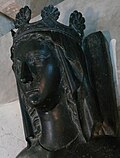Latin Empresses consort of Constantinople
| Picture | Name | Father | Birth | Marriage | Became Empress | Coronation | Ceased to be Empress | Death | Spouse |
|---|---|---|---|---|---|---|---|---|---|
 | Marie of Champagne | Henry I, Count of Champagne (Blois) | 1174 | 6 January 1186 | 9 May 1204 | Never crowned | 9 August 1204 | Baldwin I | |
 | Agnes of Montferrat | Boniface I, Marquess of Montferrat (Aleramici) | 1187 | 4 February 1207 | Never crowned | 1207/1208 | Henry | ||
 | Maria of Bulgaria | Kaloyan of Bulgaria (Asen) | - | 1213 | Never crowned | after 1216 | |||
 | Lady of Neuville | Baldwin of Neuville in Artois | 1175 | 1227 | Never crowned | 1228 | Robert | ||
 | Berengaria of León | Alfonso IX of León (Anscarids) | 1204 | 1224 | 1229 husband's accession | Never crowned | 12 April 1237 | John | |
 | Marie of Brienne | John of Brienne (Brienne) | April 1225 | 1234 | Never crowned | 25 July 1261 Fall of Constantinople | after 5 May 1275 | Baldwin II | |